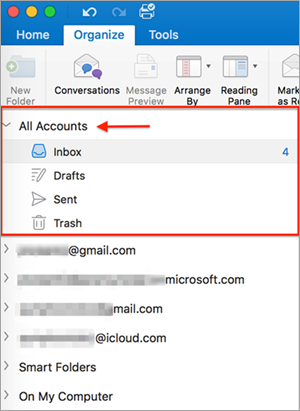
Turn Off Conversation View In Outlook For Mac
Conversation View in Outlook 2011 for Mac This article applies to: Outlook 2011 for Mac Outlook 2011 for Mac is an older email and calendar application used by Cornell faculty, staff, and graduate and professional students.
We recommend that you upgrade to, part of Office 2016 for Mac, which is free for faculty, staff, and students. By default, Outlook 2011 displays your messages in order of Date Received. You can change the sort order by clicking the heading in any column, or by selecting an option under the View menu, Arrange By. Another way to arrange your messages is Conversion View, which clusters your messages based on Subject. The original message, your replies, and other people's replies are all displayed together. Conversation view can help by giving you a compact record of an entire thread, but it can be confusing if you have more than one conversation with identical Subjects, or if you prefer to see your messages in strict chronological order.
Instead of searching for all of the messages belonging to a conversation in multiple folders such as your Inbox, archive, and Sent Mail folders, have Outlook do the organizing and group together messages that belong to the same conversation.
Is a professional Windows drivers download site, it supplies all devices for M-Audio and other manufacturers. Just view this page, you can through the table list download M-AUDIO Axiom 49 Keyboard drivers for Windows 10, 8, 7, Vista and XP you want. Are you looking for M-AUDIO Axiom 49 Keyboard drivers? Axiom 49 driver for mac. Here you can update M-Audio drivers and other drivers.
Instructions in this article apply to Outlook 2019, 2016, 2013, 2010; and Outlook for Office 365.
View Mail Grouped by Conversation Thread in Outlook
Outlook collects messages in a conversation from multiple days and folders, then it displays them all together.
Start Outlook and go to the View tab.
In the Messages group, select Show as Conversations.
To enable conversation view for the current folder only, select This folder.
Or, to apply conversation view to all your Outlook folders immediately, select All mailboxes.
Include Your Sent Mail (and Other Folders) in Conversations
Set Outlook to group messages in the same folder and draw from other folders, including Sent Items.
Start Outlook and go to the View tab.
In the Messages group, select Show as Conversations.
Select Show Messages from Other Folders.
How Does Conversation View Work?
Conversations show as an arrow to the left of the most recent message in the conversation. To see the other messages in the conversation, select the arrow to expand the thread. Select the arrow a second time to hide the thread.
Unread messages appear in bold; any collapsed conversation with at least one unread message appears in bold, too.
To streamline conversations, have Outlook remove redundant, quoted messages; for irrelevant threads, Outlook can also delete future messages automatically.
Other Conversation View Settings
The Conversation Settings menu has a few more choices:
- Show Senders Above the Subject:Outlook displays From: names first followed by the Subject lines in a thread. When this option is off, Subject lines are above sender names.
- Always Expand Selected Conversation: Outlook messages are expanded to display all the emails in a conversation when you open the conversation.
- Use Classic Indented View: Outlook displays threads in a list that has replies indented below the messages they answer. When this option is off, threads are shown as a flat list.
'Show as Conversations' Is Grayed Out. What Can I Do?
Outlook can group conversations by thread only when the emails in a folder are sorted by date. If the messages are arranged another way, Show as Conversations is grayed out and unavailable to check.
To change the view to enable Conversations:
Go to the View tab and select Change View.
Enter a name for the view that will help you recognize the view's settings, then select OK.
Your emails are arranged in date order and you can view messages as conversation threads. How to find system information on macbook pro.